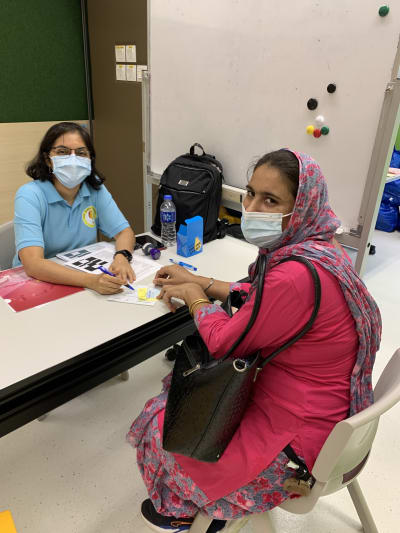People are getting increasingly mobile. For many of us, it means we are farther apart than ever from our loved ones. Communication is key for any relationship, whether you are living together or living far apart. While the technology presents us with an opportunity to be connected even when there are geographical challenges, there are things to consider about long-distance family communication. The challenge is not only about how to stay in touch but also about how to maintain closeness.
Living far away from family and important people in our lives can really affect one’s well being. Therefore, having communication that works is essential. Here are 3 strategies that can help you make long-distance family communication work.
1. Establish Communication Routines
Communication routines can help continuity and maintenance of family closeness. Routines encourage you to keep the commitment to stay in touch with your family regularly. It can also create structure and clear expectations which can help family members, especially children to adapt to long-distance relationships with parents. Having a regularly-scheduled phone or video call, for example, can give children and other family members something to look forward to and enable them to manage their expectations on when they can connect with each other.
This may require a “family schedule” and it’s important to keep consistency when planning and executing it. Once you have the schedule, minimise schedule changes and avoid delay/cancellation or attempt to have longer conversations during the next session to make up. Longer stretches of time can feel like forever to your loved ones, especially to the young ones.
Texting, emailing, calling, video-chatting, and a combination of all the methods can help maintain strong bonds. Hearing and seeing loved ones may enhance the sense of connectedness and visuals can especially make a difference in children's life. Regular facetime enables families not only to hear verbal expressions but also facial expressions, it gives a sense as if you were having the conversation in the same room.
Once in a while, you can also write an actual letter, send a postcard, or special package to your children/other family members (and vice versa). It’s personal, sweet and tangible; the surprise element can also be very memorable for family members.
Something to Think About…
Do you have regular communication with your family?
Does it make you feel motivated?
Does it help you feel less lonely?
Do you have a family schedule and/or the communication system that works effectively? (e.g. how many times in a day/week, which day and how long, is it always video chatting/calling/texting, is it with a planned topic or always spontaneous etc.)
2. Encourage Caring Engagement and Sense of Shared Life
Closeness happens when you know deeper aspects of each other’s life; and true closeness is built on open and honest communication. While communication may include topics of financial and physical needs, it is also important for families to pay careful attention to everyone’s emotional needs. Do what you can to reduce individual stress by practising a healthy lifestyle and share positive things as well as challenges with your family.
While adults might be able to handle some of the emotional challenges of long-distance parenting, most children cannot easily adapt and cope with being separated from one of their parents for great lengths of time. Other than planning and preparation by parents/family, maintaining a sense of shared life can be beneficial for all family members. This means co-parents or family members need to make effort to involve one another in their everyday lives. Avoid using precious communication time on the logistics of everyday life but allowing “boring” conversations on important details such as children’s and co-parents daily rhythm is important. Families can also show some of each other’s daily life routines during facetime.
Helping the young ones prepare what they are going to share or ask during their next call/video chat with a long-distance parent and/or having a “theme” for family conversations can nurture closeness as well as promoting effective communication. You can brainstorm and have family’s activities on budgeting and saving; or activities like drawing, dancing, book reading, doing yoga and playing games. You don’t have to always sit and converse. You can also establish new traditions for important events or celebrations.
Something to Think About…
Do you talk with your family about the challenges you’re facing in Hong Kong ?
If you have children in your country of origin, do you talk about parenting plans with your partner or family members?
What important values do you want to share with your family, and especially with your children?
3. Schedule In-person Visits and Plan Your Life Together
Visit your family whenever you can, as the regular actual presence is irreplaceable. Plan how you will spend your time but don’t over plan it - be present and enjoy the spontaneous moments too. When you finally have time for visiting families, take photographs, videos and make other records of moments together which families can keep when it’s time to be apart again. These sorts of tangible reminders that family members, especially children, can see and hold help cement memories of all the good times you’ve had.
It’s important to talk about your goals and plans with your co-parent or family members, including goals related to regular home visits and permanent home return plans. When long distance relationships are understood to be temporary, it helps families to get through the hardship of being apart and to overcome feelings like it will never end.
Something to Think About…
Do you talk about your future plan with your partner or family?
How do you see your life in 5 years’ time?
Do you have a home return plan?














